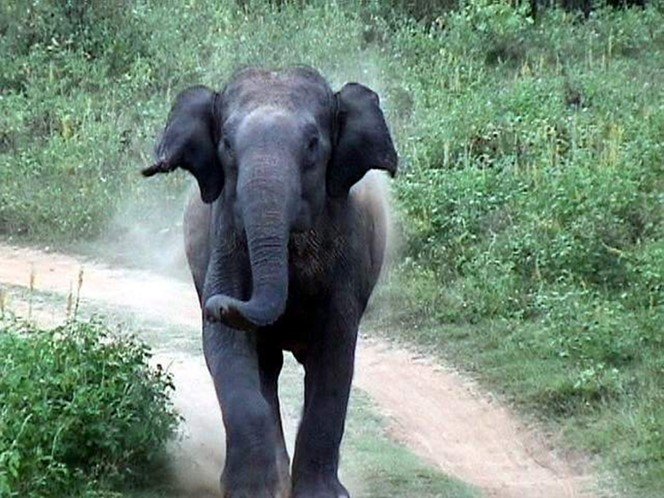All serious wildlife enthusiasts have had, at one time or another, the experience of being charged down by an enraged wild elephant in the national parks and while on a photo travel safari. It is a most frightening experience to have a 4+-ton giant bearing down at you. Sometimes it ends in calamity, although most often if handled well, the event can be circumvented without major problems.
Wild elephants can be very dangerous. However, as much as one is careful and takes all possible precautions to avoid confrontations with these giants in the wild, there is always the possibility that things can turn nasty.
However, elephants, and wildlife in general, are generally wary of humans and will give us a wide berth most often. In the wildlife parks, elephants have got somewhat accustomed to jeeps and human presence, and as closer interactions are possible at most times.
Under normal circumstances, good trackers and other persons who have experience in interacting with wild elephants, can read the tell-tale signs of agitation in advance. The common signs of early agitation are spreading its ears out and stopping the usual flapping, and other displacement behavior such as breaking off nearby branches, scooping dust and throwing it over the back, and even a few mock threatening lunges, with vigorous shaking of the head from side to side.
Now there are numerous stories ( many bordering on folklore) about certain methods that can be used to deter a charging elephant. There are senior trackers ( a fast dying out breed) who swear by specific charms and rituals that can stop a charging elephant.
I personally have not witnessed any of these methods in practical use, although I have heard very reliable testimonies about such incidents where angry elephants at full charge, have been stopped dead in their tracks.





